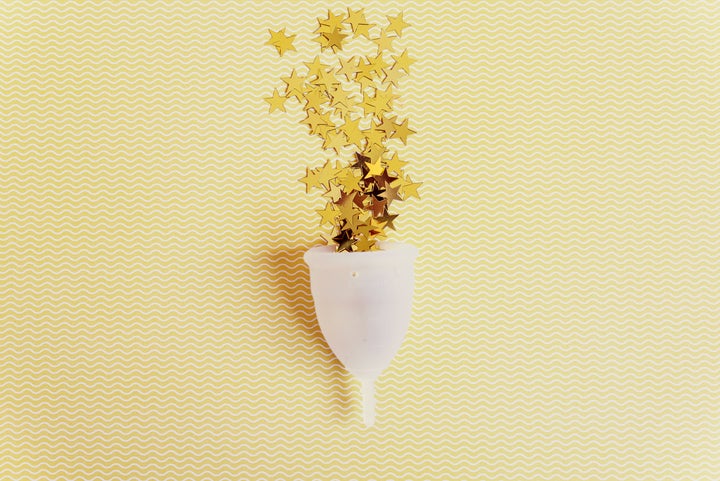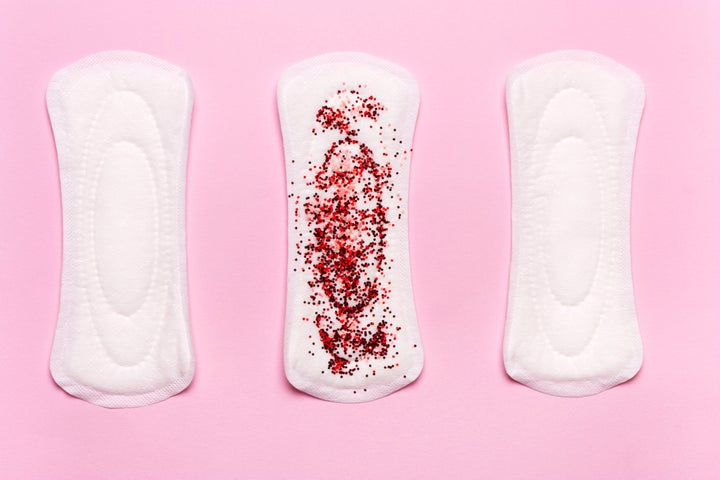
Menstrual cups are just as effective in preventing leaks on your period as other sanitary products, according to the first ever scientific review into their use.
This 2019 review of menstrual cup use looked at 43 studies and data from 3,300 women and girls in different countries. A key finding was that awareness of menstrual cups is still pretty low across the globe.
Three studies conducted in high-income countries found that only between 11% and 33% of women knew about them.
And despite there being 199 brands of menstrual cup available across 99 countries, they were only mentioned in 21 of 69 websites that provided information about puberty and periods to girls and teenagers.

What Is A Menstrual Cup?
Menstrual cups collect blood flow, rather than absorbing it. They are inserted into the vagina before being emptied (and washed) every 4-12 hours. They are then ready to reuse.
There are currently two types: a vaginal cup which is generally bell-shaped, and a cervical cup which is placed around the cervix high in the vagina like a diaphragm for contraception.
They tend to be made from materials including medical grade silicone, rubber, latex or elastomer and can last up to 10 years.
The Pros
First up, leakage – or lack of it. Four studies within the review, with a total of 293 participants, compared leakage between different sanitary products and found that levels were similar between menstrual cups and pads and tampons, while one found that leakage was significantly less when using a cup.
Menstrual cups could also provide a cost-effective and waste efficient alternative to pads and tampons, researchers suggested. Purchasing a single menstrual cup costs much less than pads or tampons over a period of 10 years. It also results in less plastic waste – over a decade, a cup is estimated to create 0.4% of the plastic waste generated by single-use pads or 6% of that produced by using tampons.
Reducing plastic use is currently a huge issue for period poverty campaigners, who support wider awareness around menstrual cups. In an open letter sent to the Department of Education this week, charities, campaigners and sustainable period brands urged the government to ensure that free period products provided in secondary schools from September 2019 are plastic-free.
[Read More: Why Is There Plastic In My Tampons?]

From a health-perspective, researchers deemed menstrual cups just as safe as tampons and pads to use. Writing about their findings in the Lancet journal, they said there was no increased risk of infection associated with using menstrual cups among European, North American, and African women and girls.
That said, hygiene and careful monitoring is key. There were five reported cases of toxic shock syndrome following use of cups, though because the overall number of menstrual cup users is unknown, researchers couldn’t compare the risk of toxic shock syndrome in menstrual cups and other products.
In four studies involving a total of 507 women, use of the menstrual cup showed no adverse effects on vaginal flora. In studies that examined the vagina and cervix during follow-up, no tissue damage was identified from use of a menstrual cup.
The Cons
The combination of an intrauterine device (IUD) and use of a menstrual cup might need further study, researchers suggested. In 13 cases, removing the cup was associated with an IUD becoming dislodged.
There were also women who reported pain after using it, but the numbers were few – three reported vaginal wounds, six reported an allergy or rash, and nine reported urinary tract complaints.
The study found that roughly 70% of women wanted to continue using menstrual cups once they were familiar with how to use them – practice, peer support and training were key to this going well.
Information and follow-up on correct use might need to form part of menstrual health programmes, the authors noted. Their study revealed that a difficulty in removing cups that ended up requiring professional assistance was reported twice for vaginal cups and 47 times for cervical cups.